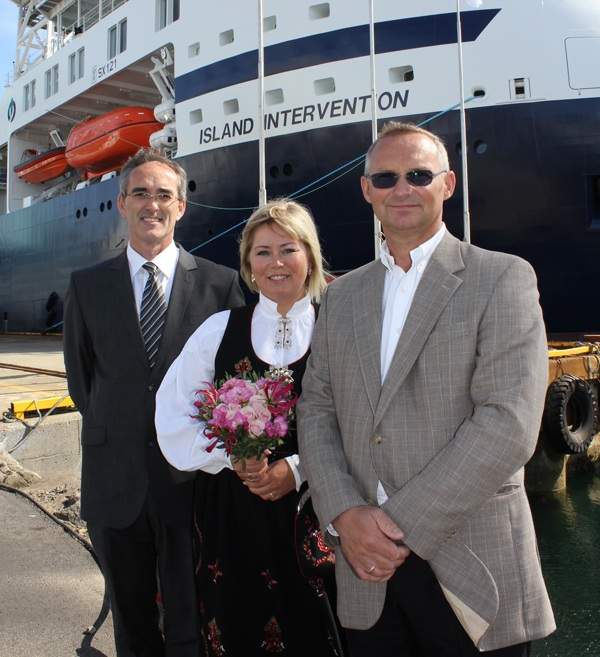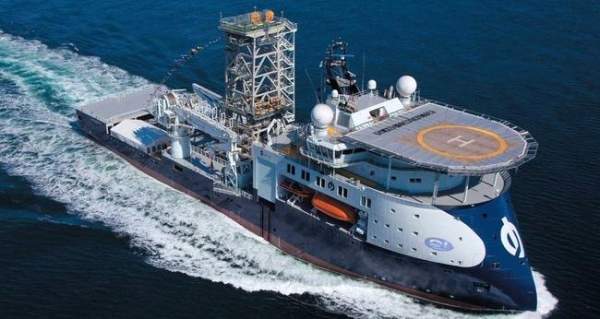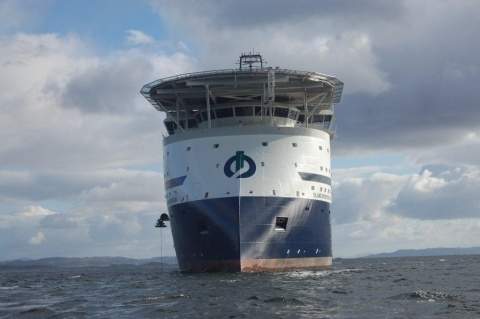Island Intervention is a riserless light well intervention (RLWI) vessel and is capable of undertaking inspection, maintenance, repair and offshore construction projects.
She was christened in August 2011 in Ulsteinvik, the commercial and administrative centre of the municipality of Ulstein, Norway.
The vessel entered operations in September 2011 and within six months she has undertaken several types of subsea projects. She was first chartered by BP for two months for the Skarv field located off the coast of Norway.
She was then engaged by Subsea 7 as a command and control vessel.
The vessel has been built to meet the tough requirements of the offshore industry. The main capabilities of the vessel include plug and abandon (P&A), construction, tower and module handling, installation, IMR (inspection, repair, and maintenance), surveying, crane and diving works.
The vessel is owned by Island Ventures IV LLC in partnership with ECO and is managed by Island Offshore Management, a ship management company within the Island Offshore Group.
Contractors involved with Island Intervention
Island Offshore Group, a leading provider of services to the offshore industry, had contracted Norway-based ship builder Ulstein Verft for the construction of the vessel in June 2007. Ulstein Design & Solutions was the ship designer.
The hull of the vessel was manufactured by the Zaliv shipyard in Ukraine. A Heavy-Duty Work Class ROV system was installed by Norway’s C-Innovation.
Ship construction milestones
Keel for the vessel was laid in November 2008 and the hull was launched in October 2009 in Ukraine. The vessel was outfitted at the Ulstein Verft shipyard and launched in July 2010. Construction was accomplished in May 2011.
Design features of the Norwegian light well intervention vessel
Island Intervention’s design is based on Ulstein SX 121 model developed by Ulstein Design & Solutions. The SX 121-based vessels are multifunctional offshore construction vessels.
The vessel is incorporated with Ulstein’s X-Bow hull design. This unique hull line, which is based on an inverted bow concept, reduces fuel consumption and ensures calm navigation and operations, even in harsh climatic and marine conditions.
Island Intervention is an environmentally-friendly vessel. It carries DNV’s (Det Norske Veritas) Clean Design notation and complies with the IMO’s ship recycling recommendations.
Technical specifications and vessel capacities
Island Intervention has an overall length of approximately 120.2m, while length between perpendiculars is 114.8m. Moulded breadth is 25m and depth to main deck is 10m. Scantling draught and design draught are 8m and 7m respectively.
Dead weight excluding the offshore crane and module handling tower is approximately 9,100t. International gross tonnage and international net tonnage are 11,572t and 3,472t respectively.
The vessel has a deck area of 1,400m² with a cargo holding capacity of 10t/m². Area of mezzanine deck is 380m² and its deck strength is 5t/m².
The vessel features an 8m x 8m moon pool which can be prepared for the operations of two work class ROVs. The helicopter deck measures 26.1m in diameter. Its shape is octagonal and can hold 14.6t.
Accommodation onboard the RWLI vessel
The vessel can provide accommodation for 100 people. There are ten state cabins with day-rooms and bedrooms. Other room combinations include 30 one-bed cabins and 30 two-bed cabins.
Facilities onboard the vessel include a hospital and sick bay, galley, clean area and source separation, mess with 62 seats, day rooms, dry provisions, one cooler and two freezer rooms.
There is also an auditorium that can seat 30 people and miscellaneous conference rooms and offices. There are separate male and female wardrooms.
Deck cranes and other equipment
The vessel is equipped with a knuckle boom crane capable of handling 15t at 15m outreach and 10t at 20m outreach.
There are two deck service cranes. Each of these is capable of pulling 2,850kg at 10m outreach and 1,550t at 14.8m outreach.
There is also an active heave compensated offshore pedestal crane capable of handling 150t. The base of the tower measures 8,135mm x 8120mm.
Deck winches include two combined windlass / mooring winches, one double mooring winch, two tugger winches and two mooring winches.
Roll damping system comprises five roll reduction tanks, anti-heeling system and two reversible pumps, each rated at 800m³/h.
Island Intervention is outfitted with an IMO Class III DnV AUTRO dynamic positioning system (DPS). Position reference systems include DPS200, DPS132, IALA, Fleet-77, a laser reference system and a hydro acoustic reference unit with remote operated gate valve.
Propulsion and power of Ulstein’s multipurpose offshore ship
The vessel is supplied with a diesel electric power and propulsion plant. There are four main generator engines. Two of these produce 4,320kW at 720rpm and another two produce 2,880kW at 720rpm. There is also an emergency generator and a harbour generator.
The main propulsion system includes controllable pitch propeller (CPP) type two azimuthal thrusters. Each of these is repelled by a frequency controlled variable speed electric motor.
The vessel obtains best station keeping capabilities by frequency controlled two tunnel thrusters which are fitted forward.











